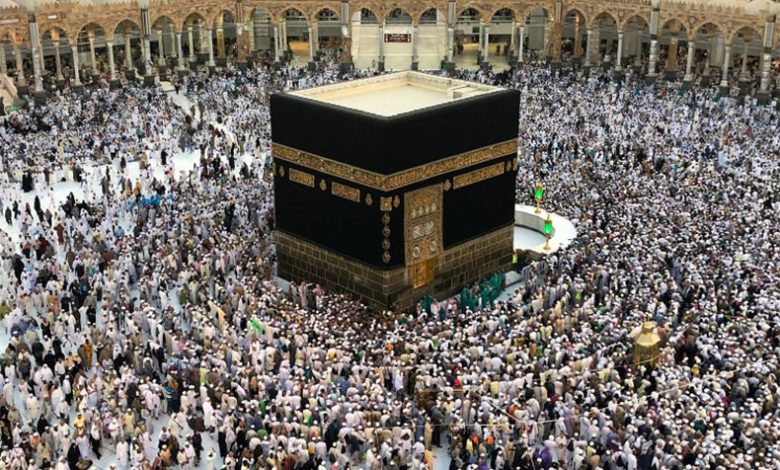
![]() :
:
By: Samar Yahya
Due to COVID-19, this year’s Hajj will be performed with numbers limited to 10,000 pilgrims. Saudi Arabia’s Ministry of Hajj and Umrah opened registration for those wishing to perform Hajj this year through its website. 70 percent of pilgrims will be expatriates residing in the Kingdom, and 30 percent will be Saudis.
Hajj which means ‘to set out for a place’, it mainly refers to the annual pilgrimage Muslims make to Makkah. Hajj includes performing certain religious rituals following the method prescribed by Prophet Muhammad (peace be upon him). It is a religious duty, which must be carried out at least once in lifetime by every adult Muslim who is physically and financially capable of undertaking the journey.
Hajj, the largest annual gathering of people on earth, is marked with peace, serenity, courtesy, kindness and helping others as the norm.
Prophet Muhammad (peace be upon him) performed his only Hajj in 630 CE, when he led early Muslims from Medina to Makkah.
The Rituals of Hajj
Standing at Arafat: After sunrise on the ninth of Dhu Al-Hajjjah, pilgrims head to Arafat, where they spend the day, as one of the basic sections of Hajj. they also visit the Mount of Mercy (Jabal Al-Rahmah) and ask for God’s forgiveness for any sins committed.
Stoning Satan: After the sunset all pilgrims retrace back towards Makkah, but stop at Muzdalifah until the brightness of day appears on the eastern horizon. At Muzdalifah pilgrims collect seven pebbles and carry them to Mina to stone Satan (Ramy al-Jamarat).
Tawaf and Sa’ay: The pilgrims then go to Makkah, where they perform Tawaf, circumambulate the Ka’abah, seven times counter clockwise. They then perform Sa’ay, running or walking seven times between the two hills of Safa and Marwa (commemorate Hajjar, wife of Prophet Ibrahim in her search for water when she was left alone by Ka’aba with her infant son, Ismail).
Then, pilgrims sacrifice sheep to commemorate the action of Prophet Ibrahim and Ismail, donating its meat to the needy. Men and women pilgrims are then required to cut a lock of hair.
The rituals of pilgrimage are now completed. Pilgrims come out of Ihram and wear their normal clothes, but remain at Mina for Eid Al-Adha. Over the next two days, they stone the three pillars in the Jamarat. They perform Tawaf Al-Wada; the farewell circumambulation of the Ka’aba before their departure from Makkah.




